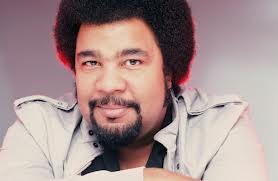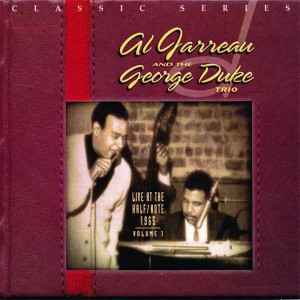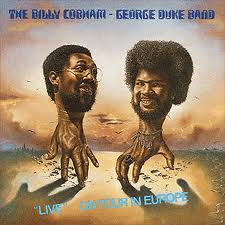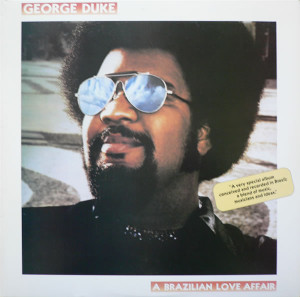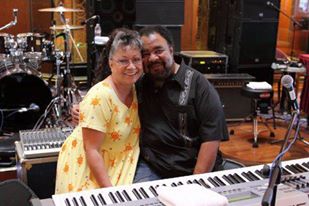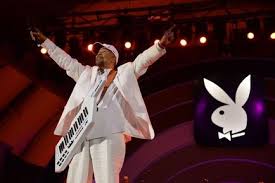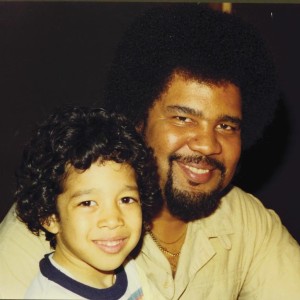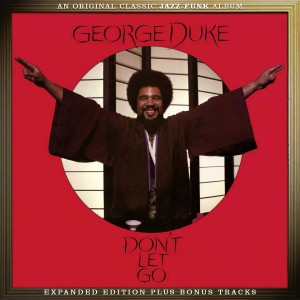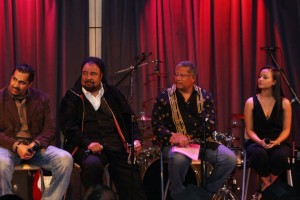George Duke: An Appreciation by A. Scott Galloway
From Adderley to Zappa…and All the Space Between:
An Appreciation of George Duke
by A. Scott Galloway
Some losses leave unfathomable fissures in the foundation of family, community and industry. The transition of George Duke at age 67 from Chronic Lymphocytic Leukemia (CLL) is such a loss. The proof lies in the first 48 hours of homage that swept across social media – emanating as much from the hearts of folks who knew him as among the warmest, funniest and most generous of men to walk the earth as from musicologists who strained to mainline the panoramic palette of his musical breadth and depth. The passing of George Duke demands that one ponder long and hard of the experience, wisdom, perspective and personality that has ascended. Yet voluminous traces have been left behind for generations to study and enjoy long into the future. It is “the future” that the electric keyboard and synthesizer wizard always had his third eye locked on…heart anchored in ancient reveries of Afro-acoustic ivories…and The Spirit ever in it.
Born January 12, 1946 in San Rafael, California and reared in nearby Marin City, George Duke was already an anomaly as a gospel-rooted, classically trained pianist, dazzled by Duke Ellington as a 4 year-old at a concert with his mother, marveling at the man who simultaneously commanded a piano and a band to do his melodious swinging bidding. George was playing in church by 7, steadily studied and graduated from San Francisco Conservatory of Music with a bachelor’s degree in trombone and composition (with a minor in contrabass) while cutting his teeth at the Half Note club accompanying his buddy, then-aspiring singer Al Jarreau.
Though he would later record with jazz greats Sonny Rollins, Gene Ammons and Don Ellis, Duke joined Julian “Cannonball” Adderley’s and Nat Adderley’s groups recording on the progressive classics Soul Zodiac, The Happy People, Pyramid and The Black Messiah among others, produced by forward thinker David Axelrod. Just before and after working with Cannonball, Duke joined brilliantly eccentric rock impresario Frank Zappa’s Mothers of Invention band, captured on irreverent slabs of wax such as Apostrophe, Chunga’s Revenge, 200 Motels and Live/Roxy & Elsewhere. That he was able to make singular, instantly identifiable contributions in these two widely disparate workshops in his early `20s says as much about George’s insatiable hunger, curiosity and adaptability as a musician as it does his open-heartedness as a man. Listen to his instrumental AND vocal arranging on the ensemble oddity The Third Wave (1970) and dig how he was weaving it all together even then.
Duke’s progress was steady and astounding when it came to his solo recordings. From his 1966 debut, George Duke Presented by The Jazz Workshop of San Francisco, then Save the Country on Pacific Jazz Records followed by a string of eight blissfully experimental audiophile LPs released via the German MPS label between 1971 and 1976, Duke’s voracious appetite engulfed West African music, electronics, soul-jazz and a toe-tappin’ take on the Beatles’ “Come Together.” From a solo piano album to trio dates to the all-star tour de force I Love The Blues, She Heard My Cry, Duke was taking absolute advantage of his foreign soil apprenticeship. He was not pandering to money-stacking commerciality. He was pumping iron in a virtual aural gym, exercising his creative muse, his compositional acuity, his mastery of the evolving science of electronic keyboards, and his prodigious abilities at production, arranging and recording studio engineering. When his contractual obligation to MPS served to preclude him from outside projects, Duke went underground, creating the alter-ego “Dawilli Gonga” which enabled him to record in dozens more super strengthening situations. He was also writing introspective lyrics…and singing, developing distinctive, soulful tenor to falsetto tones that would become his signature as much as his touch on any keyboard – plugged or unplugged.
And – thanks to Zappa – Duke learned after all the seriousness not to take ANY of it too seriously…to let his innate humor run rampant through his musical interactions in the same manner that it did his interpersonal ones.
During this fertile late `60s/early `70s period, Duke was making key alignments with like-minded musicians. A jazz-rock link-up with French electric violinist Jean-Luc Ponty resulted in three pioneering albums and on-going collaborations thru the decades. A short-lived association with Panama-born drummer Billy Cobham that began on the latter’s Crosswinds LP (featuring the mind-altering ballad “Heather” with Michael Brecker on tenor sax and John B. Williams on upright bass) followed by a co-led quartet featuring bassist Alphonso Johnson and guitarist John Scofield (in a one-off album on Atlantic Records) documented Duke’s concept of making sophisticated music that was also palatable to a greater number of people with earthiness and humor while so many other so-called jazz-rock fusion bands had turned the music into bloated chops-heavy cutting contests.
More importantly, Duke connected with bassist Stanley Clarke, a musical twin who also embraced rock ‘n roll lunacy, bedrock jazz, prodigious instrumental accomplishment and The Funk. Watching their companionship evolve from Duke guesting on Clarke classics such as “Silly Putty” (from 1975’s Journey to Love with drummer Steve Gadd) and “Life is Just a Game” (from 1976’s School Days, with Cobham on drums) then Clarke on Duke tunes like the acoustic masterpiece “Seasons” and the country-funkin’ hay romp “Down In It” (both on From Me to You) to the `80s/`90s “Clarke-Duke Projects” that swung from the Top 10 Philly Soul throwback “Sweet Baby” to a cultural message song for the youth entitled “Find Out Who You Are” (a soul song featuring jazz royalty Joe Henderson AND Wayne Shorter contributing saxophone solos) – was fascinating to behold.
Duke’s full concept took shape upon signing to Epic Records by Ron Alexenburg (at the suggestion of Columbia Records President Bruce Lundvall whose jazz keyboard roster was full up with Herbie Hancock, Ramsey Lewis, Chick Corea’s Return to Forever and Joe Zawinul’s Weather Report). Duke’s contract guaranteed full artistic control beginning with 1977’s From Me to You. Duke next created the masterwork Reach For It, a high spirited Latin Funk Fusion classic kissed with a pair of gorgeous soul ballads and a Funk Bomb for the ages in the title track, “Reach For It” – the house party jump-starter/anthem that vaulted to #2 on Billboard’s “R&B Singles” chart and became his concert-closing staple from that point on (featuring co-led rap vocals by Shreveport, Louisiana’s own Ndugu Chancler, a frequent Duke co-conspirator). This led to the George Duke Band which put the international spotlight on a teenaged Sheila Escovedo (later “Sheila E”), bassist Byron Miller, singers Josie James and Napoleon Brock Murphy, guitarist Charles “Icarus” Johnson and drummer Ricky Lawson. This, in turn, begat a series of outrageously theatrical stage shows, the introduction of Duke’s famous strap-on/portable “clavitar” keyboard, often mistakenly referred to as his “Dukey Stick” which was actually a magic wand prop that Duke wielded in the productions like a “Star Wars” light saber. Duke scored another Funk hit of outrageous sexual braggadocio about the device on 1978’s Don’t Let Go.
The gold-selling Reach For It is not only a seminal album in the George Duke canon, it is the perfect one – the succinct 10-song template of his accessible essence with not one track of filler. It morphs seamlessly from molten Latin Rock to hardcore P-Funk to the dreamiest of Quiet Storm balladry and concludes with a wordless Brazilian Jazz rhapsody. I would be shamefully remiss to ignore that though Marvin Gaye, Al Green and Teddy Pendergrass are looked upon as the purveyors of Soul Music’s male sexual machismo, it was George Duke who was musician & man enough to uncannily approximate the sound of the ultimate orgasm on this LP’s “Watch Out Baby.” Finally, Reach For It pointed the way to Duke’s obsession with galactic sound-scapes with the intro and outro “The Beginning” and “The End,” foreshadowing more expansive interludes and ultimately projects such as 1983’s storybook epic, Guardian of the Light.
Duke took an extended holiday to Brazil two years later, planting his heart among its beaches and rain forests. Though this regional passion is famously represented by his 1979 album A Brazilian Love Affair, it started long before in works recorded with vibraphone master Cal Tjader, trombonist Raul de Souza, and particularly stunning Brazilian singer Flora Purim and her percussion shaman husband Airto.
From all that jazz, George Duke plunged head first into producing R&B-Pop artists and albums – sometimes with shades of contemporary jazz be it with progressive fence-straddlers such as Dee Dee Bridgewater, Seawind, Hiroshima, Blackbyrds and The Brecker Brothers but more often with straight up chart-toppers such as female duo A Taste of Honey (1981’s gold-selling “Sukiyaki”), former L.T.D. lead singer Jeffrey Osborne (his first of several solo albums including hits “On the Wings of Love” and “Stay With Me Tonight”), Earth Wind & Fire singer Philip Bailey’s debut LP Continuation and Angela Bofill’s Quiet Storm gem “Still in Love.”
Duke’s greatest commercial achievement would be a reluctant one. While he had recorded deliciously sophisticated Soul-Pop singles for songbird Deniece Williams such as the wistful “Do What You Feel,” the anthemic “Black Butterfly” and a dragonfly float through Curtis Mayfield’s timeless “I’m So Proud” (from a lady’s point of view), his biggest production with “Niecy” was a song he patently hated: “Let’s Hear It For The Boy.” Williams loved the song and insisted he produce it as she foresaw it as her ticket to a pop breakthrough. It is to Duke’s supreme credit that he turned in a soaring arrangement that thrilled millions as a key song in the blockbuster popcorn movie “Footloose” and became a platinum-plus seller for the singer that topped both Billboard’s “R&B Singles” and “Pop Hot 100” charts.
Duke recorded three albums for Elektra Records in the `80s, the middle one – 1986’s self-titled George Duke – being of particular interest as his I-can-do-that-better project. The first single was a response to the trend of all-star vocal team-ups such as “We Are The World” and Dionne Warwick’s “That’s What Friends Are For.” George’s was a warm and fuzzy number titled “Good Friend” featuring Stephanie Mills, Jeffrey Osborne, Deniece Williams, Kenny Loggins, Joyce Kennedy, Howard Hewett and Irene Cara. Two other songs on the album were his touché’ retort to the work of English synth-beat Picassos The Art of Noise in his 12” “Broken Glass” (his slicker take on “Beat Box”/”Close to the Edit”) and the Quiet Storm instrumental “African Violet” (George’s Motherland flip on “Moments in Love”). It was cool to see George tinkering into the wee hours in his state of the art home studio, Le Gonks West, to suss out sounds of the day then put his Dukey spin on them. It was also the birthplace of Duke’s secret side project 101 North, an indie label studio group that lucked up on the urban adult radio hit “So Easy” (a Josie James & Carl Carlwell duet). Le Gonks West will be forever cherished as sacred hallowed ground by his friends and peers for all the Pouilly-Fuissé-fueled “Audio Sonic Goulash” and love – brewed fresh Night After Night.
By the `90s George Duke snugly settled into the nickname affectionately bestowed upon him: “Big Daddy!” He was nurturing a new wave of talents in a successor role to one of his mentors, Quincy Jones. Under “Q,” Duke had recorded on You’ve Got It Bad Girl in 1973 and participated in the 1979 sessions for Michael Jackson’s ground-breaking Off The Wall. Now in his own right, Duke was introducing and nurturing bright shining lights such as singers Lalah Hathaway, Dianne Reeves, Rachelle Ferrell and Chante’ Moore, instrumentalists such as bassist Christian McBride, guitarist Jef Lee Johnson and drummer “Little John” Roberts. He was producing movie music on acts from newcomers After 7 to veterans The Dells for director Robert Townsend’s “The Five Heartbeats,” scoring the documentary “Be Inspired: The Life of Heavy D,” writing the TV theme for the sitcom “Malcolm & Eddie” (voiced by Vesta Williams), and holding down the Musical Director chair for several “Soul Train Music Awards” programs, Anita Baker on the road and a Nelson Mandela tribute concert at Wembley Stadium in London. Duke was also writing and producing on the legendary Miles Davis’ final Warner Bros. studio albums Tutu and Amandla, and playing/arranging for the illustrious Nancy Wilson on This Mother’s Daughter and Nancy Now. He recorded six CDs for Warner Bros. including his symphonic dream project, Muir Woods Suite, and produced an all-star Christmas CD.
For the changing millennium, Duke went even more Big Daddy-stylee by starting his own label, BPM Records, releasing the projects Face the Music (2003), Duke (2005) and In a Mellow Tone (2006), PLUS the collector coveted DVD Tokyo Japan 1983 which captured for posterity the amazing all-star band of Steve Ferrone, Louis Johnson, Paul Jackson, Jr., Robert Brookins, Lynn Davis and Marci Levy – walking the walk of Black entrepreneurship. His `70s classic “Brazilian Sugar” was also featured in the 2006 video game “Dead or Alive Xtreme 2.”
Likely due to his excellence in so many musical arenas, George Duke is least acknowledged for the stretch of his lyrics. Listen again to his love songs such as “Someday,” “Just For You,” “Is Love Enough” and it’s smash hit prequel “No Rhyme, No Reason”:
“Sometimes love has no rhyme or no reason / Even when you try to be cool / At the strangest times love can make a connection / If you trust your heart to choose”
Contrast that with the conscience-calling “Somebody Laid It On Us” (from 2008’s Dukey Treats), “Buffalo Soldiers” (from Illusions), “Change the World” (from DreamWeaver) and the existential musings “Feel” and “Faces in Reflection”:
“Somewhere within there’s the one that is you…come…faces do reveal shadows of you that you cannot conceal…”
Duke was constantly pushing the lyrical envelope to explore richer themes of existence, conscience, culture, history and uplift.
George Duke’s final decade found him busy as ever guesting on albums from Bootsy Collins and Lee Ritenour to Terri Lyne Carrington and a forthcoming one on Regina Belle, producing from soul band Tower of Power to gospel star Smokie Norful, and releasing three last albums via Heads Up International Records: Dukey Treats (2008), Déjà Vu (2010) and this year’s 13-song DreamWeaver which was released July 16th and debuted at #1 on the Contemporary Jazz chart on the strength of songs like his revisiting all his analog synths on “Brown Sneakers,” the eerily prophetic “You Never Know,” the CD-closing nod to Roy Rogers & Dale Evans’ “Happy Trails,” and “Missing You,” George’s adoring tribute to his lovely wife of 42 years, Corine, who preceded him in death in July 2012.
The last two times I saw George Duke perform were both summer nights under the stars at the behemoth Hollywood Bowl. The first was in 2011 during a tour co-headlining with bassist Marcus Miller and saxophonist David Sanborn – truly a tall order of master musicianship. George was strong throughout and in playful funky form. His final L.A. performance was June 15th at the “Playboy Jazz Festival” in the closing Saturday night slot co-billed with his longtime friend Jeffrey Osborne for whom George had just produced the singer’s first jazz standards CD, A Time For Love. Anyone who thought their show would be a reenactment of that laidback project got the surprise of their life as George & Jeffrey came out with four guns drawn, blasting a combination of Dukey hits, Jeffrey singing solo hits AND hits from his days in the 10-piece band L.T.D. – all concluding with a jam through, what else, “Reach For It.” George was noticeably thin – his outfit hanging loosely on him – and his voice was not at full strength, but he led the band flawlessly through a crack set of songs that were every bit as slammin’ as the original recordings and then some. Everyone in the audience was partying hearty and anyone who attends that festival on the regular knows that this is a Herculean feat to achieve as the last act on the bill. I was truly blessed to be sitting in box seats flush center to take in George’s unforgettable Cali curtain call…
In closing, I believe what George would love and appreciate more than anything is for just one boy or girl to be sparked by his story enough to wholeheartedly pursue a life in music like he did. Note that I did not write “career” in music…but Life. George lived long enough to see young people sample his music – Daft Punk smashing his song “I Love You More” for their track “Digital Love” or Kanye’ West in producer mode sampling “Someday” for Common’s “Break My Heart” – and perhaps aspire to aspects of his mastery…his dexterity on keyboards…his plaintive falsetto. But to see a kid “reach for” unimpeachable all-around musical excellence – the ability to realize anything one can imagine, as an artist AND at the service of others, in a head/heart space where theory meets technology and, all importantly…feel – that would have “Big Daddy” bouncin’ on clouds.
The Aura Will Prevail.
A. Scott Galloway
Music Editor
The Urban Music Scene.com
August 8, 2013
For Rashid
A. Scott Galloway is a music journalist based in Los Angeles whose specialty writing niche is liner notes essays for classic album CD reissues and compilations. He has composed over 300 of those including Soul Music Records’ 2012 reissue of George Duke’s 1978 LP, Don’t Let Go. Mr. Galloway first met and interviewed George Duke in 1989 at the Sunset Blvd. offices of Elektra Records in West Hollywood during promotion for Duke’s 21st CD, Night After Night.
Mr. Galloway is pictured above sitting on the panel “A Tribute to Teena Marie” in the Clive Davis Auditorium of the Grammy Museum in Downtown Los Angeles – January 2011(L to R: KJLH Program Director Aundrae Russell, George Duke, A. Scott Galloway and Alia Rose, Teena Marie’s daughter)
